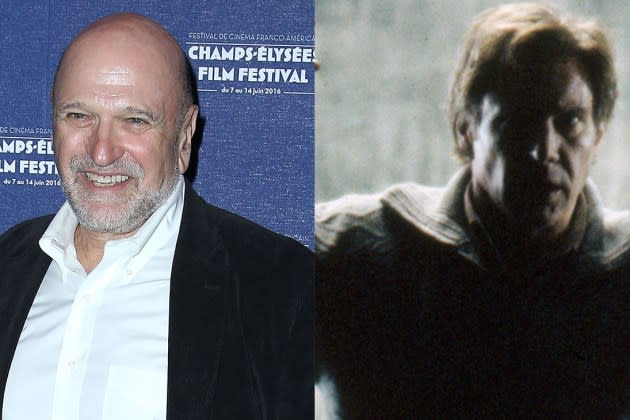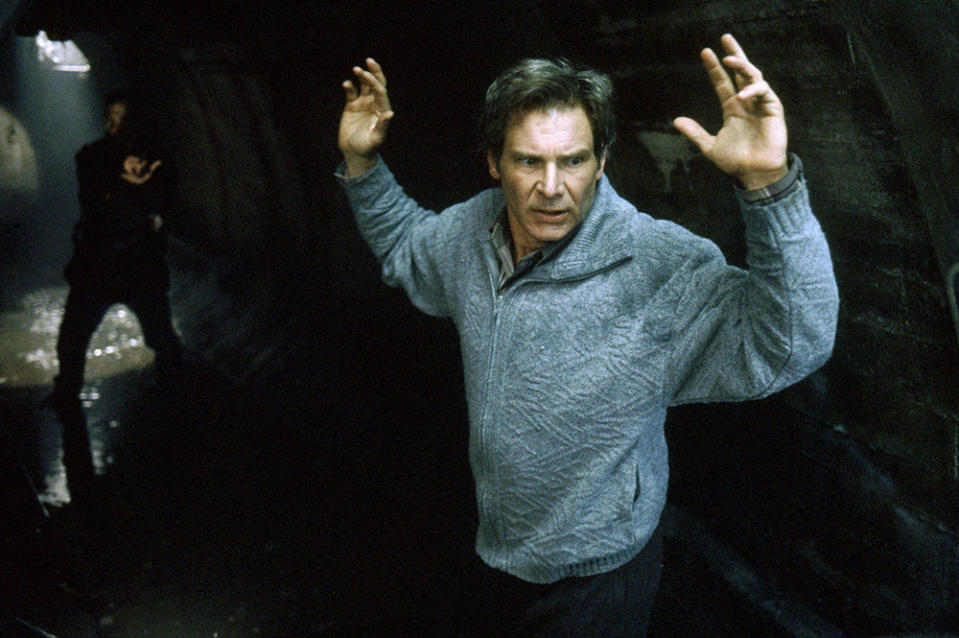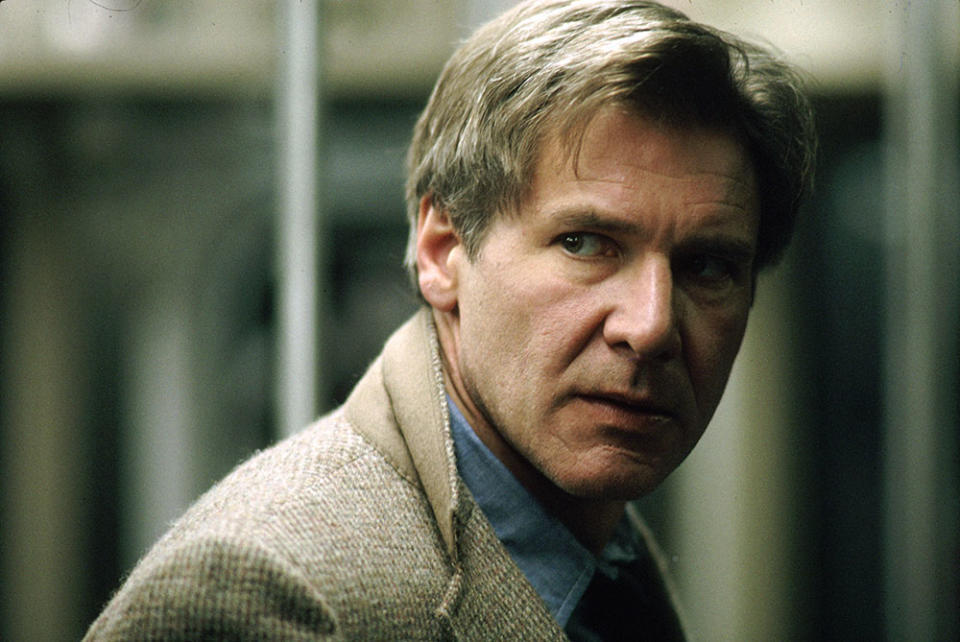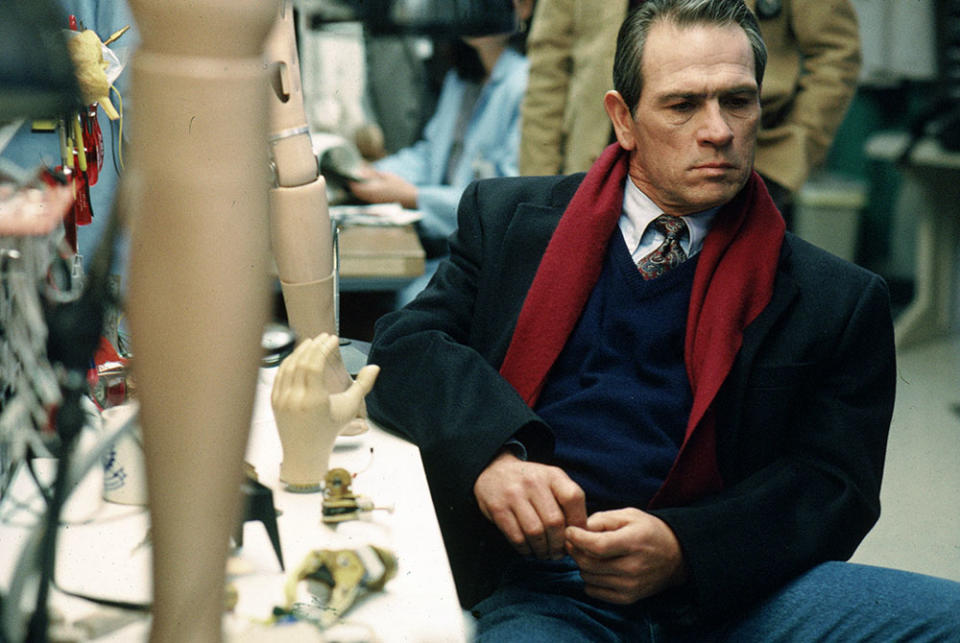Director Andrew Davis Explains Why They Don’t Make Movies Like ‘The Fugitive’ Anymore
- Oops!Something went wrong.Please try again later.
- Oops!Something went wrong.Please try again later.
- Oops!Something went wrong.Please try again later.

Every now and then, someone on social media will lament about why they don’t make movies like The Fugitive anymore. For Fugitive director Andrew Davis, the decrease in crime dramas and thrillers that are primarily geared toward grown-ups actually dates back much further than the blockbuster craze of the past 15 years.
With the film, which turned 30 in August, Davis accomplished the rare feat of being both a commercial and critical success, culminating in seven Oscar nominations and one win for Tommy Lee Jones as best supporting actor. The Harrison Ford-starring vehicle that reimagined the 1963 TV series of the same name certainly didn’t set out to be the third-highest-grossing film of 1993 or an awards darling. Warner Bros. merely strove for a base hit, as opposed to swinging for the fences, and that philosophy ties into why the major studios no longer prioritize films with the scope and scale of The Fugitive.
More from The Hollywood Reporter
Dennis Virkler, Oscar-Nominated Editor of 'The Fugitive' and 'The Hunt for Red October,' Dies at 80
Kiefer Sutherland on Why He Joined Quibi's 'The Fugitive': "I Fell in Love With it"
Harrison Ford's 'The Fugitive' Gets 20th Anniversary Edition
“It started with Jaws. When you could make a movie that could play all over the world and have all of these incredible box offices, studios wanted to invest in that home run all the time,” Davis tells The Hollywood Reporter. “But [WB co-chairmen] Bob Daly and Terry Semel said, ‘We’re happy hitting doubles.’”
What makes Davis’ film all the more impressive is that its postproduction process was just 10 weeks long. By today’s standards, 10 weeks is the minimum amount of time that a director is required to have before submitting their initial director’s cut. In The Fugitive’s case, the studio really wanted to capture teenagers and adults before school was back in session.
“Barry Reardon, who was the head of distribution at Warner Bros., said, ‘Can you get this thing out by August 6th?’” Davis recalls. “There were six editors, but three main editors, and I would go from room to room. It was almost like a dentist’s office where I would check in on each patient … And everybody hated us afterwards, because, ‘Well, if The Fugitive did it in 10 weeks, why can’t you do it in 10 weeks?’ When we showed the film to the studio, they went, ‘Don’t touch a thing. We love it.’”
Below, during a recent conversation with THR, Davis also discusses the one moment in which Ford had to sport a fake beard, as well as shooting the Chicago St. Patrick’s Day parade scene on the fly.
When I think of Harrison Ford, I don’t think of Han Solo or Indiana Jones; I think of Dr. Richard Kimble using his fingers to eat an incapacitated man’s scrambled eggs. Do you recall anything from that day at the hospital?
We knew we only had one shot of the train crash and only one shot to shave off the beard [in that same scrambled eggs sequence]. So there was a question of how to stage it so he could be hidden behind the bathroom door, and it’s funny, because when the nurse comes in to fill up the water bottle, you can see the paper towel still fluttering from him closing the door. So he’s glad she didn’t catch that. That was one of the few things we shot in North Carolina besides the train crash, and Harrison was really on his game. That was also the day he shot himself with a needle in order to get rid of the infection from his wound, and so I just remember how he ate that food. He was so real about playing him as famished.

Every year, I see variations of the following joke: “People argue about whether Die Hard is a Christmas movie, but there’s no denying that The Fugitive is a St. Patrick’s Day movie.” Once you were slated to shoot in Chicago during the month of March, did you rewrite the script to include the St. Patrick’s Day parade getaway?
I wanted to put the St. Patrick’s Day parade in my first movie, Stony Island, which is also being rereleased [on Nov. 17]. But I couldn’t do it because Mayor [Richard J.] Daley died, and so I shot his funeral instead. Now, [on The Fugitive], we had a chase through City Hall, and I couldn’t have it end just with Tommy [Lee Jones’ Gerard] going, “Oh my God, he got away.” I had to continue [the sequence], and we couldn’t do a French Connection car chase. And so I knew that the St. Patrick’s Day parade was coming and that it would be a perfect and wonderful way to get lost in the fabric of Chicago. We then got the Plumber’s Union to agree to let us get involved in it, and I don’t think the city really knew what we were doing. We were so invisible. We had a Steadicam and a couple cameras hidden here and there, so we just joined the crowd and Harrison grabbed a hat and put it on. It was very, very much of the moment and also very cold. And I love the fact that Harrison walks off into the crowd and then the camera pans back to Tommy jumping up and down, still looking for him. So it was wonderful, and to hear the real sound of those bagpipes was fantastic.
We want to believe that our most celebrated movies were pre-planned in methodical detail, but many of my favorite movies, including this one, were rewritten on the day. And in your case, I imagine it got pretty complicated because Dr. Kimble’s beard had to come off at a certain point, and you couldn’t go back and add anything to the pre-murder story unless you used a silly fake beard. Thus, does that explain the masked surgery flashback that introduces Provasic? [Writer’s Note: Davis has said in the past that he, along with a group that included Ford and Jones, originated the Provasic subplot during filming.]
That [masked surgery scene] was actually shot before he shaved his beard. Richard Jordan was the original bad guy. Jeroen Krabbé’s part was originally Richard Jordan’s, but he got sick and had to leave the film. So we had to reshoot those few scenes, and there’s one shot in the movie where Harrison does have a phony beard in order to connect Jeroen Krabbé’s new version of the character. But that was it. We didn’t have to go back and do any reshooting of anything else.
Harrison recently told THR that former Warner Bros. chairman Bob Daly was never fond of him with facial hair, and so you probably got away with it here because Dr. Kimble shaves within the first 30 minutes. But later on in the movie, around the 90-minute mark, someone in the U.S. Marshal’s office randomly says, “Tell [Kimble] he looks good in a beard.” Was that some pointed meta commentary regarding Daly’s view on Harrison’s beard?
No, I think Danny Roebuck just made up that line that morning.

The internet says that you only had 10 weeks to do post, and nowadays, I think that’s the minimum amount of time required for a director’s cut. Why was the release date so immovable?
It was to have those last couple weeks of summer before school started and to have a window into the fall. The picture played from August till December, which is unheard of today. Barry Reardon, who was the head of distribution at Warner Bros., said, “Can you get this thing out by August 6th?” So we went to work, and it was amazing. There were six editors, but three main editors, and I would go from room to room. It was almost like a dentist’s office where I would check in on each patient, and [co-producer] Peter MacGregor-Scott was a wizard of postproduction. So while we were cutting, we were also dubbing and looping and doing all kinds of stuff at the same time. And everybody hated us afterwards, because, “Well, if The Fugitive did it in 10 weeks, why can’t you do it in 10 weeks?” When we showed the film to the studio, they went, “Don’t touch a thing. We love it.” We still made 1,500 changes after that, just little trims and things, but we worked on it up to the last minute.
I sometimes wonder whether it’s better to have no time versus too much time. When you have little to no time, you’re often going on instinct, but if you have nothing but time, you run the risk of overthinking and second-guessing yourself.
Some of the most interesting things I’ve done have been under pressure, and I know that there are a lot of artists like that. Whether they’re composers or writers, they need a kind of pressure on them. I don’t want to work like that all the time, but what’s really rewarding is having an idea in your head about how you want things to look and feel, and then pulling it off. You go, “Wow, we really did that.” So The Fugitive is a whole array of that. All these people came together and did such a great job. I was really blessed with an incredible cast and crew.
I often hear people ask, “Why don’t they make movies like The Fugitive anymore?” What do you consider to be the turning point?
Well, The Fugitive wasn’t a midbudget film in those days.
Yeah, a $44 million budget is the $90 million range now.
But I think it started with Jaws. When you could make a movie that could play all over the world and have all of these incredible box offices, studios wanted to invest in that home run all the time. But Bob Daly and [WB co-chairman] Terry Semel said, “We’re happy hitting doubles.” They still had Batman [1989] and some other big hits. So they knew this was going to be a popular movie, but they didn’t know it was going to be this popular. I remember Daly saying to me, “It’s rare that we have a box office this healthy, reviews this healthy and all these nominations.” It was very rare for them to have all of those things happening at once, which was wonderful.

Tommy Lee Jones can be a tough customer, but based on The Package, Under Siege and his Oscar-winning Fugitive performance, you’ve obviously worked well together. So what’s the key to a successful collaboration with him?
Respect and not being afraid of what he has to contribute. If you give Tommy the space to participate as a creative soul, it’s going to be better than trying to say, “No, don’t do that, don’t do this.” He’s contributed so much in all of my movies, and having the ability as a director to step back and let actors feel the moment is something I learned from [Gene] Hackman. I was a young director when I did The Package, and I had to learn to give him space to find where he was at with a scene before I jumped in. And Tommy just has an incredible range. Look at his films, they’re mind-boggling. And Harrison, too. He’s such a pro. He’s been on so many sets with so many interesting directors, and he likes the process. He’s a carpenter. He likes the process of working collaboratively with people, from the grip to the carpenter, to everybody on the set, as they help him do what he wants to do.
Well, happy 30th anniversary to one of my favorite films ever, and I’m glad it can be celebrated with a new 4K.
Thank you. I have to say that the 4K Blu-ray looks better than any time you’ll ever see it in the theater. The quality is better than what you can project in a movie theater, so just be aware of that.
***
The Fugitive is now available on 4K.
Best of The Hollywood Reporter
Martin Scorsese’s 10 Best Movies Ranked, Including 'Killers of the Flower Moon'
13 Times Hollywood Predicted the Scary (or Not So Scary) Future of AI

